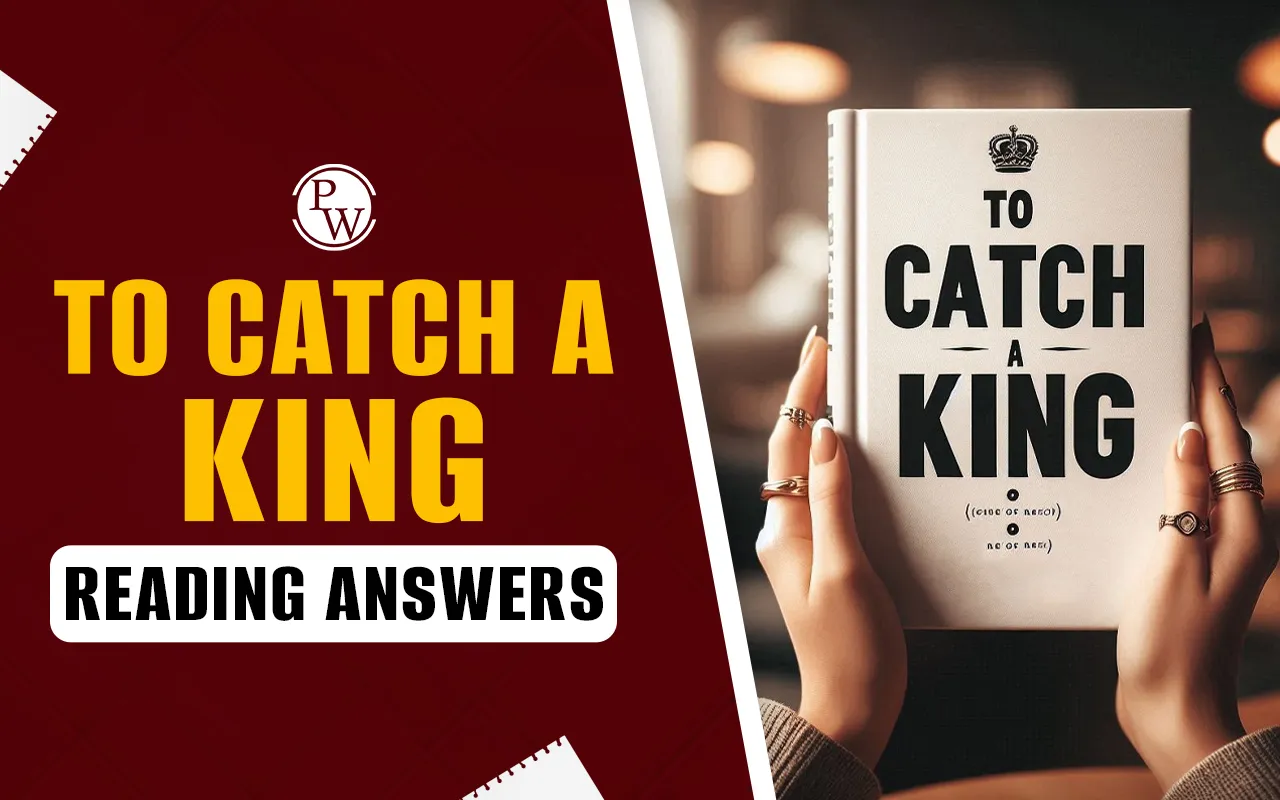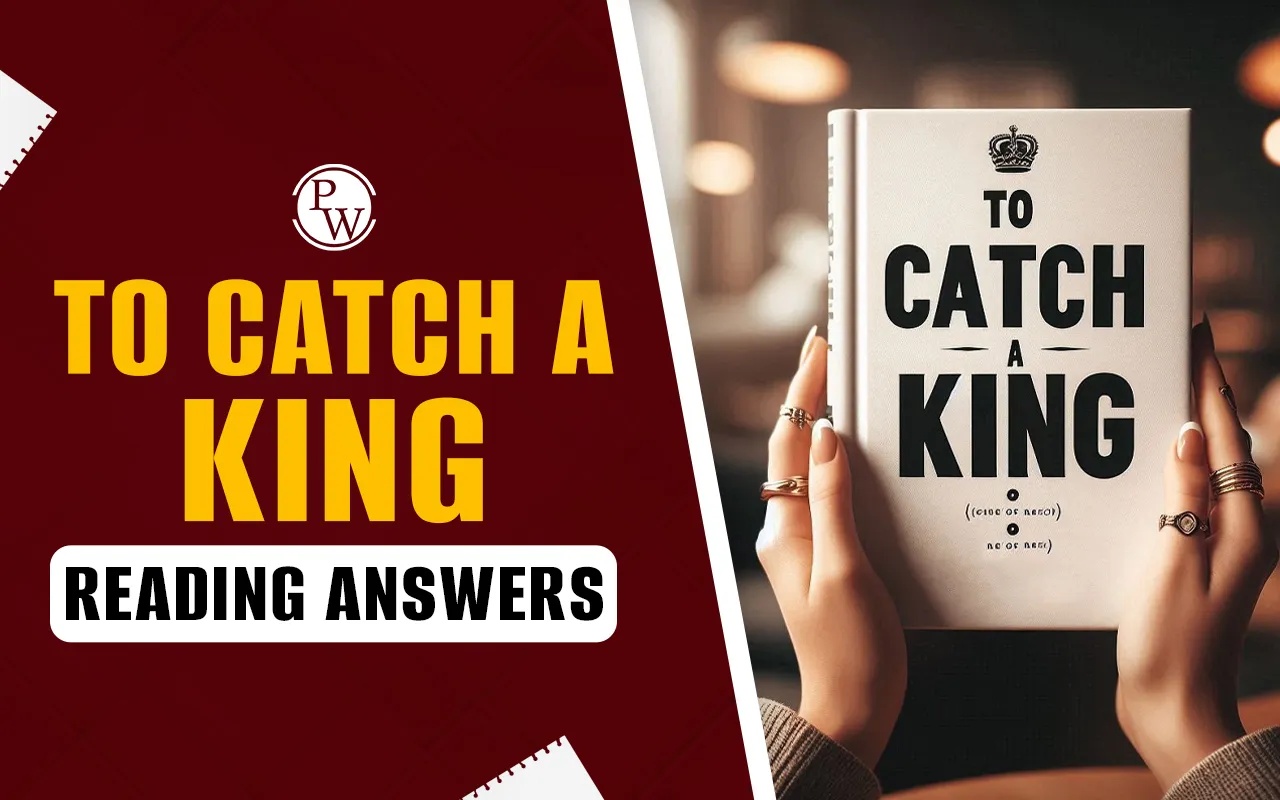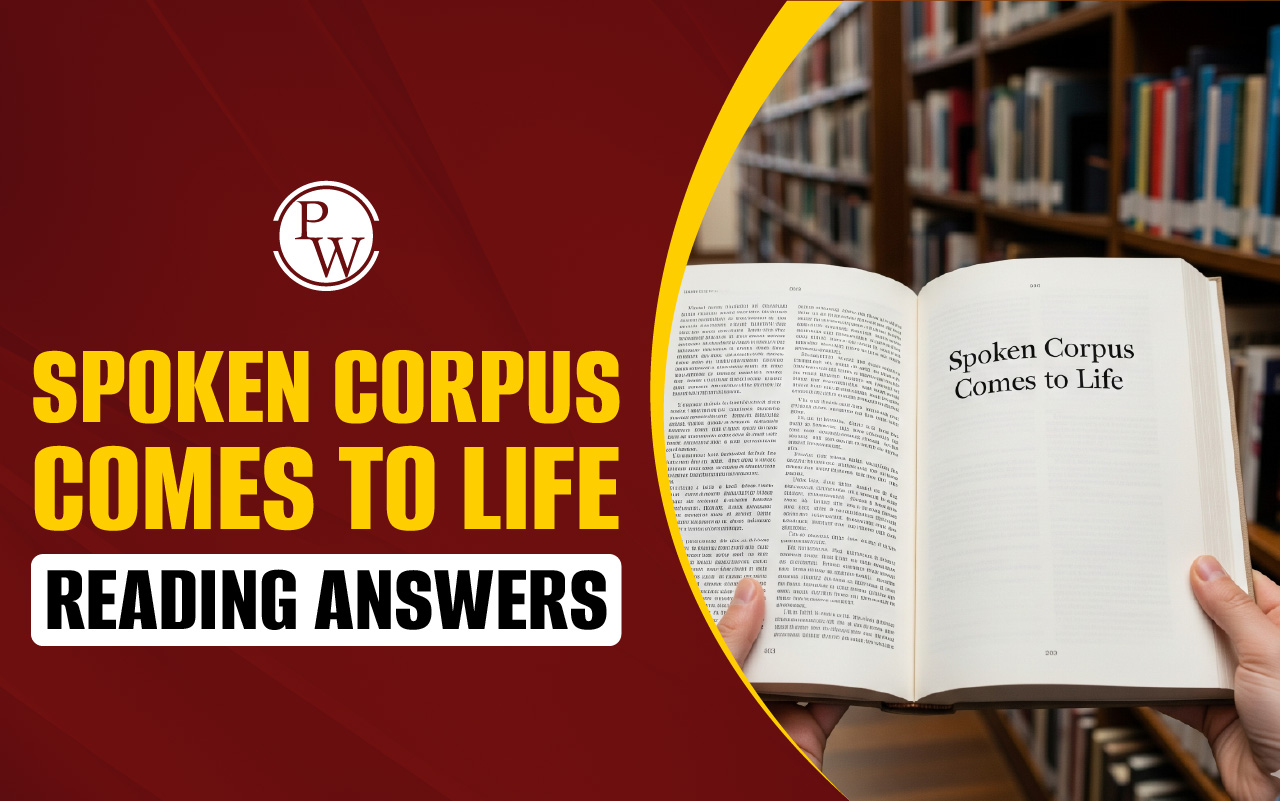
To Catch A King Reading Answers: “To Catch A King” is a captivating IELTS reading passage that delves into the dramatic escape of King Charles II following his defeat at the Battle of Worcester in 1651. This historical account explores the challenges he faced while evading capture, the tactics he used to survive, and the lasting impact of this episode on his reign.
This guide provides a complete passage with answers to help IELTS aspirants sharpen their reading comprehension skills. The passage includes a variety of question types, such as Summary Completion, Yes/No/Not Given, and Multiple-Choice Questions. Practicing these will improve the ability to extract key details, analyze historical events, and enhance overall performance in the IELTS Reading section. Engaging with this passage will offer valuable insights into both history and exam strategies, ensuring thorough preparation.
To Catch A King Reading Answers Passage
You should spend about 20 minutes on Questions 1-14, which are based on the Reading Passage below.
To Catch a King
Anna Keay reviews Charles Spencer’s book about the hunt for King Charles II during the English Civil War of the seventeenth century.
-
Charles Spencer’s latest book, To Catch a King, tells us the story of the hunt for King Charles II in the six weeks after his resounding defeat at the Battle of Worcester in September 1651. And what a story it is. After his father was executed by the Parliamentarians in 1649, the young Charles II sacrificed one of the very principles his father had died for and did a deal with Scots, thereby accepting Presbyterianism* as the national religion in return for being crowned King of Scots. His arrival in Edinburgh prompted the English Parliamentary army to invade Scotland in a pre-emptive strike. This was followed by a Scottish invasion of England. The two sides finally faced one another at Worcester in the west of England in 1651. After being comprehensively defeated on the meadows outside the city by the Parliamentarian army, the 21-year-old king found himself the subject of a national manhunt, with a huge sum offered for his capture, through a series of heart-poundingly close escapes, to evade the Parliamentarians before seeking refuge in France. For the next nine years, the penniless and defeated Charles wandered around Europe with only a small group of loyal supporters.
-
Years later, after his restoration as king, the 50-year-old Charles II requested a meeting with the writer and diarist Samuel Pepys. His intention when asking Pepys to commit his story to paper was to ensure that this most extraordinary episode was never forgotten. Over two three-hour sittings, the king related to him in great detail his personal recollections of the six weeks he had spent as a fugitive. As the king and secretary settled down (a scene that is surely a gift for a future scriptwriter), Charles commenced his story: ‘After the battle was so absolutely lost as to be beyond hope of recovery, I began to think of the best way of saving myself.’
-
One of the joys of Spencer’s book, a result not least of its use of Charles II’s own narrative as well as those of his supporters, is just how close the reader gets to the action. The day-by-day retelling of the fugitives’ doings provides delicious details: the cutting of the king’s long hair with agricultural shears, the use of walnut leaves to dye his pale skin, and the day Charles spent lying on a branch of the great oak tree in Boscobel Wood as the Parliamentary soldiers scoured the forest floor below. Spencer draws out both the humour – such as the preposterous refusal of Charles’s friend Henry Wilmot to adopt disguise on the grounds that it was beneath his dignity – and the emotional tension when the secret of the king’s presence was cautiously revealed to his supporters.
-
Charles’s adventures after losing the Battle of Worcester hide the uncomfortable truth that whilst almost everyone in England had been appalled by the execution of his father, they had not welcomed the arrival of his son with the Scots army, but had instead firmly bolted their doors. This was partly because he rode at the head of what looked like a foreign invasion force and partly because, after almost a decade of civil war, people were desperate to avoid it beginning again. This makes it all the more interesting that Charles II himself loved the story so much ever after. As well as retelling it to anyone who would listen, causing eye-rolling among courtiers, he set in train a series of initiatives to memorialise it. There was to be a new order of chivalry, the Knights of the Royal Oak. A series of enormous oil paintings depicting the episode were produced, including a two-metre-wide canvas of Boscobel Wood and a set of six similarly enormous paintings of the king on the run. In 1660, Charles II commissioned the artist John Michael Wright to paint a flying squadron of cherubs* carrying an oak tree to the heavens on the ceiling of his bedchamber. It is hard to imagine many other kings marking the lowest point in their life so enthusiastically, or indeed pulling off such an escape in the first place.
-
Charles Spencer is the perfect person to pass the story on to a new generation. His pacey, readable prose steers deftly clear of modern idioms and elegantly brings to life the details of the great tale. He has even-handed sympathy for both the fugitive king and the fierce republican regime that hunted him, and he succeeds in his desire to explore far more of the background of the story than previous books on the subject have done. Indeed, the opening third of the book is about how Charles II found himself at Worcester in the first place, which for some will be reason alone to read ‘To Catch a King.’
-
The tantalizing question left, in the end, is that of what it all meant. Would Charles II have been a different king had these six weeks never happened? The days and nights spent in hiding must have affected him in some way. Did the need to assume disguises, to survive on wit and charm alone, to use trickery and subterfuge to escape from tight corners help form him? This is the one area where the book doesn’t quite hit the mark. Instead, its depiction of Charles II in his final years as an ineffective, pleasure-loving monarch doesn’t do justice to the man (neither is it accurate), or to the complexity of his character. But this one niggle aside, To Catch a King is an excellent read, and those who come to it knowing little of the famous tale will find they have a treat in store.
| IELTS Exam Important Links | |
|---|---|
| IELTS Reading Band Score | IELTS Listening Band Score |
| IELTS Speaking Band Score | IELTS Writing Band Score |
To Catch A King Reading Answers Sample Questions
Summary Completion (Q. 1-5)
Complete the summary below. Choose ONE WORD ONLY from the passage for each answer.
Charles Spencer’s book To Catch a King recounts the dramatic escape of King Charles II following his defeat at the Battle of (1) ______ in 1651. With a substantial reward offered for his capture, Charles was forced into hiding, using various disguises and tactics to evade the (2) ______ searching for him. His personal experiences during these six weeks were later recorded by the writer (3) ______, who was requested by the king to preserve his story. Despite the lack of public support upon his return, Charles remained fascinated by his own (4) ______ and ensured its commemoration through paintings and decorations, including images of an (5) ______ tree in his bedchamber.
Yes, No, Not Given (Q. 6-9)
Do the following statements agree with the information given in the reading passage?
Write:
-
YES if the statement agrees with the information
-
NO if the statement contradicts the information
-
NOT GIVEN if there is no information on this
6. Charles II willingly accepted Presbyterianism as the national religion because he strongly believed in it.
7. Henry Wilmot’s reluctance to wear a disguise made Charles II’s escape more difficult.
8. The majority of English citizens supported Charles II’s attempt to reclaim the throne with the help of the Scots.
9. Charles II’s love for storytelling helped in the preservation of his escape story.
Multiple-Choice Questions (Q. 10-14)
Choose the correct letter (A, B, C, or D).
10. Why did Charles II seek help from the Scots?
A) He wanted to avenge his father’s execution.
B) He saw it as his only chance to regain power.
C) He had strong religious beliefs in Presbyterianism.
D) He needed financial support from Scotland.
11. How did Charles II manage to remain undiscovered in Boscobel Wood?
A) He was protected by Scottish soldiers.
B) He disguised himself as a commoner.
C) He hid in an oak tree.
D) He changed his appearance frequently.
12. What does the reviewer praise most about Spencer’s book?
A) Its use of Charles II’s own recollections.
B) Its focus on the political background of the period.
C) Its critical view of Charles II’s rule.
D) Its analysis of the military tactics in the battle.
13. How did Charles II react to his own escape story in later years?
A) He rarely mentioned it due to embarrassment.
B) He used it as a way to connect with his courtiers.
C) He ensured it was recorded and visually commemorated.
D) He focused more on his future as a ruler rather than the past.
14. What is the reviewer’s main criticism of the book?
A) It fails to capture the complexity of Charles II’s character.
B) It is too focused on minor historical details.
C) It lacks original sources and documentation.
D) It portrays Charles II in an overly heroic manner.
To Catch A King Reading Answers with Explanations
-
Worcester
-
Location: Paragraph 1: "Charles Spencer’s latest book, To Catch a King, tells us the story of the hunt for King Charles II in the six weeks after his resounding defeat at the Battle of Worcester in September 1651."
-
Explanation: The passage states that Charles II was defeated at the Battle of Worcester, making it the correct answer.
-
Parliamentarians
-
Location: Paragraph 1: "After being comprehensively defeated on the meadows outside the city by the Parliamentarian army, the 21-year-old king found himself the subject of a national manhunt."
-
Explanation: The Parliamentarians were the ones searching for Charles II, so they are the correct answer.
-
Pepys
-
Location: Paragraph 2: "Years later, after his restoration as king, the 50-year-old Charles II requested a meeting with the writer and diarist Samuel Pepys."
-
Explanation: Charles II asked Samuel Pepys to document his escape story, giving him the correct answer.
-
Escape
-
Location: Paragraph 3: "One of the joys of Spencer’s book, a result not least of its use of Charles II’s own narrative as well as those of his supporters, is just how close the reader gets to the action."
-
Explanation: The passage focuses on Charles II's escape and his fascination with it, making "escape" the correct answer.
-
Oak
-
Location: Paragraph 3: "The day Charles spent lying on a branch of the great oak tree in Boscobel Wood as the Parliamentary soldiers scoured the forest floor below."
-
Explanation: The passage states that Charles hid in an oak tree, making "oak" the correct answer.
-
NO
-
Location: Paragraph 1: "The young Charles II sacrificed one of the very principles his father had died for and did a deal with Scots, thereby accepting Presbyterianism as the national religion in return for being crowned King of Scots."
-
Explanation: Charles II accepted Presbyterianism for political gain, not because of personal belief, contradicting the statement.
-
YES
-
Location: Paragraph 3: "Spencer draws out both the humour – such as the preposterous refusal of Charles’s friend Henry Wilmot to adopt disguise on the grounds that it was beneath his dignity."
-
Explanation: Wilmot’s refusal to disguise himself could have increased the risk of Charles being caught, making the answer "YES."
-
NO
-
Location: Paragraph 4: "Whilst almost everyone in England had been appalled by the execution of his father, they had not welcomed the arrival of his son with the Scots army, but had instead firmly bolted their doors."
-
Explanation: The English people did not support Charles II’s invasion with the Scots, contradicting the statement.
-
YES
-
Location: Paragraph 5: "As well as retelling it to anyone who would listen, causing eye-rolling among courtiers, he set in train a series of initiatives to memorialise it."
-
Explanation: Charles II was passionate about retelling his escape story, confirming the statement.
-
B) He saw it as his only chance to regain power.
-
-
Location: Paragraph 1: "The young Charles II sacrificed one of the very principles his father had died for and did a deal with Scots, thereby accepting Presbyterianism as the national religion in return for being crowned King of Scots."
-
Explanation: Charles II allied with the Scots for political advantage, making B the correct answer.
-
-
C) He hid in an oak tree.
-
-
Location: Paragraph 3: "The day Charles spent lying on a branch of the great oak tree in Boscobel Wood as the Parliamentary soldiers scoured the forest floor below."
-
Explanation: The passage clearly states that Charles hid in an oak tree, making C the correct answer.
-
-
A) Its use of Charles II’s own recollections.
-
-
Location: Paragraph 3: "One of the joys of Spencer’s book, a result not least of its use of Charles II’s own narrative as well as those of his supporters, is just how close the reader gets to the action."
-
Explanation: The review praises the book for using Charles II’s personal narrative, making A the correct answer.
-
-
C) He ensured it was recorded and visually commemorated.
-
-
Location: Paragraph 5: "He set in train a series of initiatives to memorialise it... a series of enormous oil paintings depicting the episode were produced."
-
Explanation: Charles II ensured his story was recorded and remembered, making C the correct answer.
-
-
A) It fails to capture the complexity of Charles II’s character.
-
-
Location: Paragraph 6: "Instead, its depiction of Charles II in his final years as an ineffective, pleasure-loving monarch doesn’t do justice to the man (neither is it accurate), or to the complexity of his character."
-
Explanation: The reviewer criticizes the book for not portraying the complexity of Charles II’s character, making A the correct answer.
-
Also Read:
- Should You Use All Capital Letters in the IELTS Listening and Reading Tests
- IELTS Reading Mistakes
- How to Improve IELTS Reading Score
- How to Manage Time in IELTS Reading
Guidance of PW IELTS
Physics Wallah offers multiple online IELTS courses for all students. Follow the IELTS pages to better prepare for the exam.
| What is IELTS Exam? | Documents Required for IELTS Registration |
| IELTS exam eligibility requirements | IELTS Exam Fees |
| IELTS test results | IELTS Exam Pattern |
To Catch A King Reading Answers FAQs
What is the book "To Catch a King" about?
Why did King Charles II accept Presbyterianism?
How did King Charles II avoid capture?
How does Charles Spencer's book stand out?
How did Charles II later commemorate his escape?











